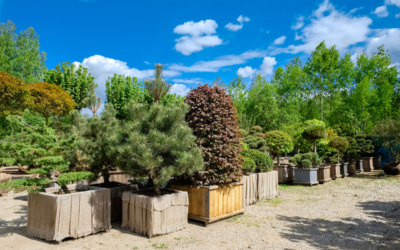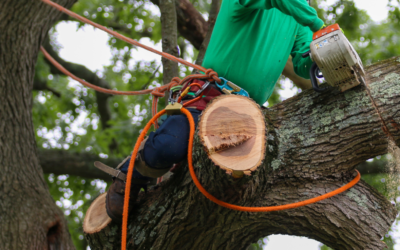Basic Steps, Prep and Where to Turn for Expert Advice
Adding a tree or two to your landscape is both an investment and a commitment.
Taking some time to do your homework will pay off in long-term rewards, both aesthetic and financial.
Here are some things to consider:
Choose a Good Location
Pick a spot where the tree’s light, water, and environmental needs are compatible with the surrounding landscape. Planting too close to walls, pavement, or overhead obstructions can result in damage or poor health for the tree. Different trees need different considerations, so choose a variety suitable for the location.
Give the Roots Room to Grow
Digging the right size hole is crucial to the tree’s success. Too narrow or too deep a hole will cause young, tender roots to grow improperly, even to the point of killing the tree. The planting hole should be 2-3 times the width of the root ball to let the roots spread, but no deeper than the root ball’s height. Too deep a hole can cause the tree to settle and tilt.
Set the Tree Properly
Leave the roots wrapped until you set the tree in the hole. Turn the tree so it’s facing the direction you want and cut the wrap away carefully. You can leave the loose burlap or other organic wrap in the hole if it’s easier; just push it to the bottom.
Backfill the Hole
Gradually fill the hole with soil, packing it lightly as you go. Don’t compact the soil; the roots need to grow into the soil easily. Keep checking to see that the trunk is straight as you add fill. If the soil is reasonably good, you don’t need to add organic amendments. Most trees won’t need fertilizer, in fact, some fertilizers can burn tender young roots. A 3-inch layer of mulch will reduce water loss and help keep out weeds. Use any leftover soil to make a berm around the edge of the hole for a watering well.
Stake the Tree Carefully
A single stake may suffice for a small tree, but larger ones may need two or three. Place the stake(s) well away from larger trees and drive the stake(s) all the way through the root ball and into to firmer ground below it. Never use wire or narrow cord that can cut the trunk and leave plenty of room around the loop for the trunk to grow.
Keep the Tree Watered
Water the tree after it’s planted and keep watering it daily for several weeks to encourage the roots to grow into the surrounding soil. The roots will have established themselves after a few weeks, so you can gradually cut back on watering.
Don’t Prune the Tree in the First Year
Choose a tree at the nursery that has the size and shape you want. Any pruning or trimming a new tree should be limited to broken, diseased or dead limbs to give the tree time to establish itself without needing to divert energy to healing unnecessary wounds.
Need Help?
Properly chosen and maintained trees are an important investment that can add considerable value to both residential and commercial property. If you need a helping hand, Donovan Arborists offers planting, pruning, and shearing services as well as a complete landscape maintenance package for property in the Denver area that includes care of trees, shrubs and turf.
We’re committed to maintaining and protecting Colorado’s natural beauty in accordance with the best practices of urban landscaping. We use environmentally friendly practices and a holistic approach, focusing on the greater picture of the plants, their surroundings, soil, water, climate and light exposure to create optimal outdoor environments for your landscape to thrive.
We’re always happy to give free estimates to homeowners and property managers for any services they may need.




